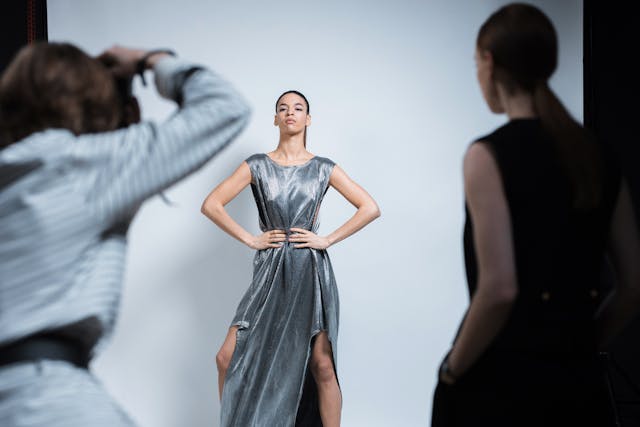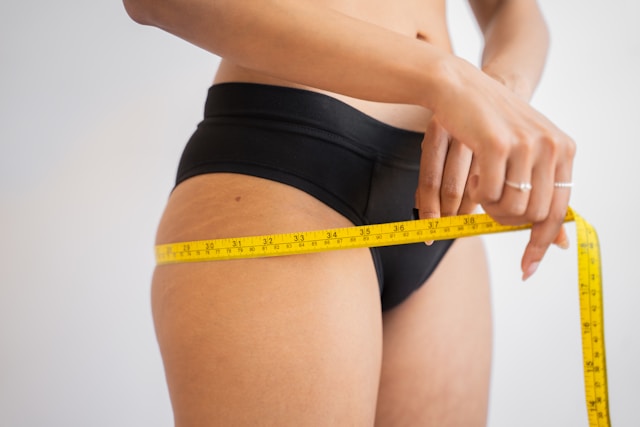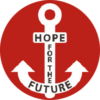
Many teenagers dream of one day striding down the catwalk in a flurry of cameras, showing off the latest creations of their favourite designers and eventually landing on the cover of trendy magazines. For almost two decades, the reality show Germany’s Next Topmodel, hosted by Heidi Klum, has been fuelling this desire by putting young women (and, since 2024, men too) to the test week after week in various challenges – with the enticing promise of a modelling contract, substantial prize money and, of course, great career opportunities. But now the question arises: is the modelling business really as glamorous as it appears on the screens?
Financial exploitation by agencies
Those hoping for quick money are often disappointed. As a VOLLBILD investigation has now shown, the supposed dream job can quickly become a debt trap. Up-and-coming models in particular incur high costs for travelling, accommodation, photo shoots and castings, which are often only advanced by agencies but not fully covered.
Ekaterina Ozhiganova, herself a model and founder of the organisation ModelLaw, criticises the systematic financial exploitation in the industry:
‘It is now clear to us that modelling agencies systematically abuse the rights of their models and do so for their own benefit. What I mean by this is not direct abuse, but in our experience primarily financial abuse, financial exploitation.’
Example: the Modelwerk Academy
One particularly problematic example is the ‘Modelwerk Academy’. The renowned Hamburg model agency ‘Modelwerk’ offers inexperienced models a training programme lasting several days, which is advertised as the ‘perfect quick start’ into the industry. The contents of the workshop include photo shoots as well as catwalk and social media training. The cost of the programme is 2,200 euros.
Models Sina and Emma (names changed) were signed to Modelwerk. They were assured that they would not have to pay the Academy costs directly. Instead, the costs were to be offset against future modelling jobs. But the jobs they had hoped for never materialised. Without support from their agency and with ever-increasing debts, the two were suddenly released from their contract after a year. This was followed by bills, reminders and letters from lawyers. Their cases eventually ended up in court.
Claudia Midolo, who is responsible for the Academy at Modelwerk, defends the system. In her opinion, there are dissatisfied people in every industry and the problem is simply that people in Germany don’t want to pay for further training. So is it a problem of the right attitude?
Criticism from industry experts
Not quite. Industry experts such as Peyman Amin, former booker for Heidi Klum and ex-judge of Germany’s Next Top Model, sharply criticise such business practices:
‘I don’t think even 20 euros is justified. It is important that the models don’t spend any money at the beginning. A reputable modelling agency should always make sure that there are no costs for the model, especially in the first stages of the model’s development.’
Although Amin warns against lumping all agencies together, he admits that there are many dubious agencies that demand money even before the first job placement.
If you want to be beautiful, you have to suffer?
For many, the dream of the catwalk doesn’t just come with financial risks. The models’ health also suffers from the brutal standards of the industry. The infamous size zero trend, which was already controversial in the 1990s, is currently celebrating its comeback and requires models to fit into a dress size that corresponds to the European 30/32.
To clarify: the size 30 in the EU corresponds to the international size XXXS.
The psychological pressure to which many models are exposed is enormous. Hunger, excessive sports training and the constant fear of gaining weight are the order of the day for many. Model Anne-Sophie Monrad, who has modelled for renowned brands such as Givenchy, Gaultier and Karl Lagerfeld, has experienced the health consequences of these extreme body ideals first-hand. She told VOLLBILD:

‘You’re totally in your bubble there. And… support each other, so to speak. And fall into a total eating disorder…’
This is how Monrad describes the reality of many models. Most agencies demand constant control over their weight: they are only allowed to lose weight, not gain it – even muscle gain is scrutinised critically:
‘My biggest health risk was missing my period. And you always have to emphasise that. That means I’m not just risking my health for the moment, but it can have long-term consequences.’
Although the fashion industry has repeatedly promised improvement over the past few years, the reality shows that little has changed. Fashion groups such as Kering, which includes Yves Saint Laurent, and Moët Hennessy – Louis Vuitton SE (LVMH) published a charter in which they promised to remove size 32 from their casting requirements. However, an analysis by VOLLBILD shows that this self-commitment is not consistently reflected in practice. At Paris Fashion Week in 2024, for example, six models walked for Yves Saint Laurent and ten models for Louis Vuitton who wore a dress size that was too small compared to the charter.
#METOO: Sexualised violence is also not uncommon…
In addition to financial and health risks, many models face an even bigger problem: abuse of power and sexualised violence. The modelling industry has been known for years to have a strong imbalance between aspiring models and powerful – mostly male – photographers, designers and agents. Model Caro Schäffler tells VOLLBILD:
‘I know it’s still commonplace for certain models to only do certain jobs because they got involved in certain things with a person who could offer you something in return.’
This unequal balance of power creates a breeding ground for sexual assault and abuse. Schäffler herself has had such experiences, including during a test shoot where the photographer wanted to photograph her undressed without prior agreement. Such assaults are not an isolated incident in the industry, but part of a systemic problem in which models often feel they have to comply in order to advance professionally.
A particularly shocking example of this abuse is the case of Mike Jeffries, the former head of US fashion company Abercrombie & Fitch. Last year, he was charged with allegations of sex trafficking. According to the indictment, he and his partner organised a prostitution ring in which models in several countries were exploited. The abuse is alleged to have been committed against at least 15 people between 2008 and 2015.
The industry is facing urgent change. Stricter controls, transparent contracts and a clear renunciation of toxic ideals are necessary to make the modelling business safer. This is the only way to ensure that models do not have to jeopardise their health and dignity for the dream of the catwalk.
Translated by Anna Smith
#Ausbeutung #finanzielleAusbeutung #Model #Models #Modelbranche #sexuelleÜbergriffe #sexuelleAusbeutung #stopptAusbeutung #AgainstHumanTrafficking #GegenMenschenhandel #EndExploitation #EndTrafficking #HopeForTheFuture #Österreich
